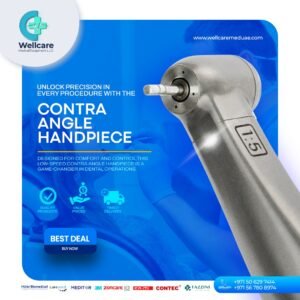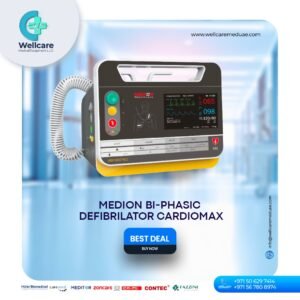Medical equipment supplier in Mali
The importance of medical equipment in Mali is underscored by its critical role in enhancing healthcare delivery, improving health outcomes, and supporting public health initiatives. Medical equipment enables healthcare facilities across Mali, from urban hospitals to rural clinics, to provide essential medical services. This access is crucial for addressing healthcare needs promptly and effectively, particularly in remote areas where infrastructure and resources may be limited. By ensuring availability of diagnostic tools, treatment devices, and monitoring equipment, medical equipment suppliers help bridge gaps in healthcare access and reduce disparities in healthcare delivery. Advanced medical equipment, such as imaging machines (like X-ray, MRI, and ultrasound), laboratory analyzers, and diagnostic tools, plays a pivotal role in accurate diagnosis and precise treatment planning. This capability not only improves patient outcomes by facilitating early detection of diseases and conditions but also supports healthcare providers in delivering targeted therapies and interventions. In settings where timely diagnosis can mean the difference between life and death, reliable medical equipment is indispensable. Medical equipment is essential for bolstering Mali's readiness to respond to public health emergencies, epidemics, and natural disasters. Equipment such as ventilators, defibrillators, and emergency monitoring systems are critical in managing acute medical crises and providing life-saving interventions. Suppliers ensure that healthcare facilities are equipped to handle sudden surges in patient numbers and can effectively manage emergency situations, thereby safeguarding community health and resilience. Suppliers not only supply equipment but also offer training and technical support to healthcare professionals. This capacity building enhances the skills and proficiency of local healthcare staff in using and maintaining medical equipment. By empowering healthcare providers with the knowledge and expertise to operate equipment effectively, suppliers contribute to sustainable healthcare practices and infrastructure development in Mali. Medical equipment supports preventive healthcare efforts through screening programs, vaccinations, and early detection initiatives. Screening tools like mammography machines for breast cancer detection or glucose monitors for diabetes management enable proactive healthcare interventions that can mitigate disease progression and improve long-term health outcomes. By facilitating early diagnosis and preventive measures, medical equipment suppliers contribute to reducing the burden of disease and promoting population health.
The impact of medical equipment in Mali is profound and spans various aspects of healthcare and public health:
Enhanced Healthcare Delivery: Access to medical equipment improves the ability of healthcare facilities in Mali to deliver timely and effective medical services. This includes diagnosis, treatment, surgical interventions, and patient monitoring, leading to better health outcomes.
Improved Diagnosis and Treatment: Advanced medical equipment such as imaging machines (X-ray, MRI, CT scan), laboratory analyzers, and diagnostic tools enable healthcare providers to accurately diagnose conditions and tailor treatment plans accordingly. This improves the efficiency and effectiveness of healthcare interventions.
Support for Critical Care and Emergencies: Equipment like ventilators, defibrillators, and intensive care unit (ICU) monitors are essential for managing critical conditions and emergencies. Their availability can significantly impact survival rates and patient outcomes during emergencies, epidemics, and natural disasters.
Capacity Building and Professional Development: Suppliers often provide training and technical support to healthcare professionals on the operation, maintenance, and safety protocols of medical equipment. This capacity building enhances the skills of local healthcare staff, ensuring the sustainable and effective use of equipment over time.
Public Health Impact: Medical equipment supports preventive healthcare measures through screening programs (e.g., mammography for breast cancer) and vaccination campaigns. These initiatives contribute to disease prevention, early detection, and population health improvement.
Reduced Healthcare Disparities: By improving access to medical equipment in rural and underserved areas, healthcare disparities between urban and rural populations can be reduced. This helps ensure equitable access to quality healthcare services across the country.
Economic and Social Benefits: A well-equipped healthcare system enhances productivity by reducing the economic burden of illness and disability. It also promotes social well-being by improving community health and resilience to health-related challenges.
Health System Strengthening: Investment in medical equipment contributes to the overall strengthening of Mali’s healthcare system. It builds infrastructure, enhances institutional capacity, and fosters collaboration between public and private sectors, creating a more resilient healthcare system.
In conclusion, the impact of medical equipment in Mali extends beyond immediate healthcare delivery to encompass broader public health benefits, economic development, and systemic improvements in healthcare infrastructure and capacity. These factors collectively contribute to improving health outcomes and quality of life for the population.




